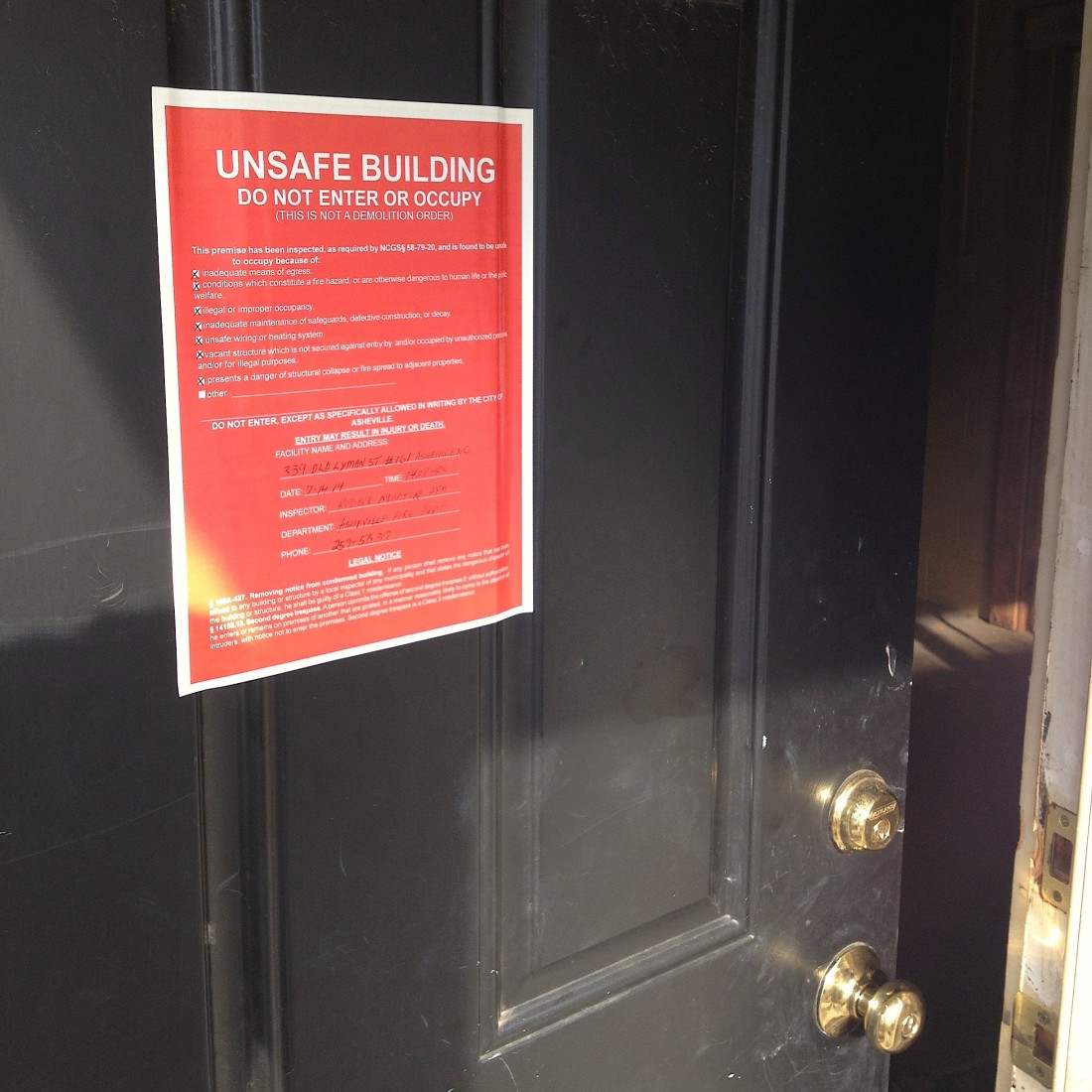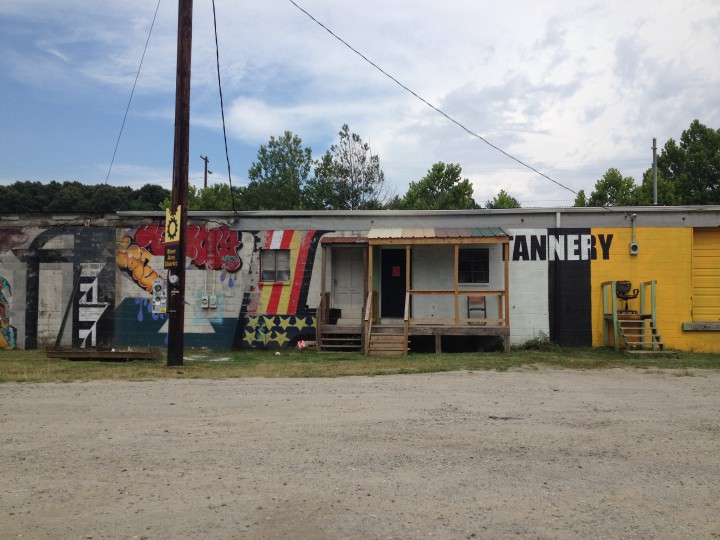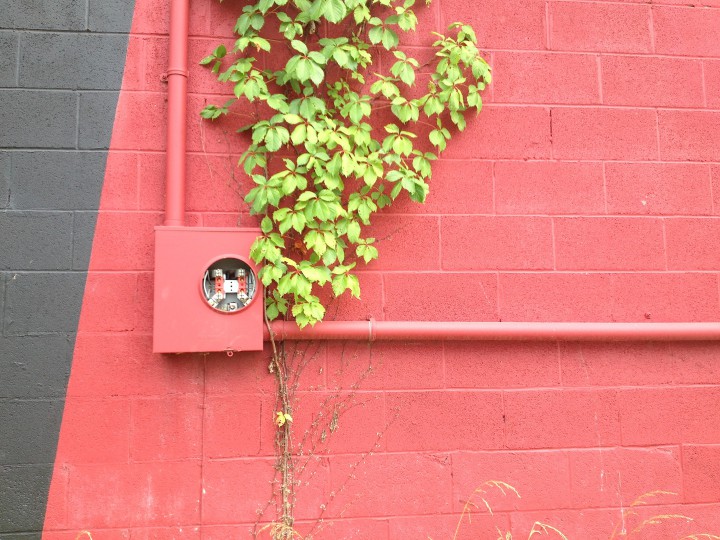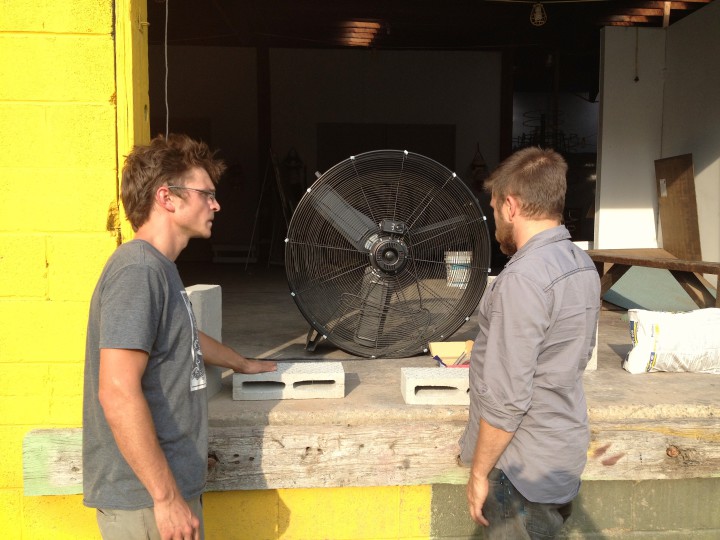An 11th-hour effort to stave off a city order mandating that nearly two dozen artists vacate a cluster of River Arts District buildings came to an end on Wednesday afternoon, July 16, when city officials made final their decision and declined to issue a temporary certificate of occupancy. The mandate affects a city-sponsored art project and New Belgium, among others.
The property comprises eight buildings tucked behind Riverview Station. It’s owned by Asheville developer Robert Camille, who purchased the site in 2007. For the last 2 1/2 years, the space has housed dozens of artists studios and workshops, including The Tannery and Switchyard Studios and local dance company Terpsicorp.
The buildings have long been used for materials storage but have also been occupied by a tanning facility (hence the studio’s name) and a car-crushing company, among others. Since 2012, though, the site has been primarily used as studio, performance and exhibition space.
But now, according to Asheville’s Development Services Department and Fire Marshal’s Office, the spaces are all unfit for occupancy.
City officials ordered that the premises be vacated on Friday morning, July 11. Duke Energy employees removed the meters, cutting off power to all eight buildings the following Monday afternoon, July 14. Tenants have been forbidden from further use of their studios, barring what minimal access is necessary to move out.
Unfit for use
“We collectively came to that decision late last week,” said Shannon Tuch, director of Development Services Department. “By shutting off the power, we’re eliminating some of our biggest concerns,” she says. The greatest of those fears, which was amplified after a string of arsons in the RAD in the spring of 2013, is fire.
“On a basic level, there [are] no operable fire hydrants or sprinkler systems,” Tuch said. Thus, there’s little the Fire Department could do if a large fire were to break out. Added to that, she said, the buildings all lack adequate parking and access for those with disabilities. The buildings also fail to meet Federal Emergency Management Agency standards for buildings located within flood plains.
These and other code violations were first came to the fore in June 2012, when a stop-work order was issued to several tenants who were renovating their studios. Subsequent site inspections exposed a lapse in building tenants in the 2000s. Those gaps led to the loss of the buildings’ certificate of occupancy and further rendered them unfit for use. However, through ongoing dialogue between city officials and Camille, the tenants were allowed to stay while the paperwork was sorted out.
“We had no idea that there wasn’t a CO on the properties when we moved in,” said Jeremy Russell, an artist, founder and tenant of Switchyard Studios since January 2012.
Tuch acknowledges that the revolving door of tenants and various use and permit applications made the site status unclear until recently.
Russell and several studio mates had been working to bring the building up to code and ultimately restore the certificate of occupancy.
But plans to fix the spaces and make proper studios were dropped as permit requests stalled or failed to be properly filed. Demolition and construction work to expand studio spaces and install permanent walls were limited to temporary partitions. Most improvement projects were put on hold.
“We compromised our vision to be code-compliant,” Russell said. “And now we’re about to lose everything that I’ve worked for down here.”
The order to vacate signified a halt, if not the end, to over two years of touch-and-go conversations involving the city, Camille and Russell. From the city’s point of view, the buildings should never have been leased to Russell and the other artists. Camille, however, maintains that he was merely renting empty warehouse spaces.
“The plan all along was to create a place [where] these artists who make the face of the RAD could afford to stay — a place that would be affordable and stay affordable,” Camille said. But that was in 2007, before the housing and financial collapse completely set in. When 2008 and the recession rolled around, Camille was unable to secure the loans he needed and had to drop his plans to overhaul the buildings. “After the collapse, I used them as they were,” he said, “as warehouses.”
It was the tenants’ responsibility to bring the buildings up to code if they wanted to use the space for more than warehouse storage, Camille added. Russell and others did so, with little or no help from Camille. However, as the costs mounted, progress with the city stalled.
“They’ve changed the use of the buildings,” said Tuch. “And to go from a basic warehousing use to what they are now — studios — requires a fair amount of work to be done.”
She added, “It’s not a simple fix.”
Exodus
Despite the order to vacate, the city is being flexible on the timetable. Emergency orders can warrant a one-week period to vacate, or even 24 hours, but in this case, city officials are instead offering two to three months, according to Russell.
News of the outage and order to vacate generated an immediate outpouring of community support last weekend. Rapidly circulating emails and Facebook posts called attention to the matter, while various studios, galleries and businesses messaged, posted and phoned in, offering up whatever spare space they have to the exiting artists.
Some artists started packing on Friday afternoon. While a few were heading for other studios and the aforementioned spaces, most either stayed put or simply took their belongings home, for lack of anywhere else to go.
“I’m in the middle of a $7,000 project installation,” said Bob Judy, a sculptor and owner of Zep Designs, “but this puts a halt on everything.”
Judy and his studio mates, like Russell and other remaining tenants, have yet to find a new location. They’re instead turning to their own basements and crawl spaces for temporary refuge.
“We’re moving out,” he said, “we have no other real choice.”
New Belgium Brewing was also among the tenants to take action over the weekend. The company is leasing one of the buildings to store wood beams and materials reclaimed from existing structures on its RAD site, which is under construction. “Not knowing the future status of this building, we are looking at our options going forward,” said Susanne Hackett, New Belgium’s community relations specialist. The company began taking those materials to be kiln dried and prepared for future use. “As of now, we are looking at our options for material relocation, but have not finalized a new location,” she said.
Part of the trouble for the exiting artists is finding comparable studio spaces — especially ones that are as large and as affordable.
Rents for Tannery studios were as low $200 per month for a 168-square-foot space. The biggest spaces commanded $650 per month, much less than street-front studio and retail locations in the heart of the RAD.
Prices like that, Russell said, regularly elicited a revolving population of short-term renters. The low cost also lured in visiting and local artists in need of temporary space for single-, large-scale projects or even exhibitions — a group of Western Carolina University art students rented several studios in April for a weeklong pop-up exhibition.
Most recently, mural artists Alex Irvine and Ian Wilkinson have been using a Tannery studio to work on a public-art piece slated for installation on the north side of a city-owned parking garage at 51 Biltmore Ave. The project, and thus the artists’ three month’s worth of rent, are publicly funded by the city of Asheville.
Irvine and Wilkinson could only afford to allot $1,600 of their total budget to studio space, according to Irvine, making The Tannery prime real estate. Anything else would have taken away from their material costs.
“We shopped a bunch of other places,” says Wilkinson, “The Tannery was it. That’s where we could afford do it.”
But as the electricity went off and signs went up, Irvine and Wilkinson kept working. They had no other choice. “I have a 1,500-pound sculpture … that’s drying out,” said Irvine. “If it does that before I’m able to finish, it’s ruined.” Moving the piece wasn’t an option either, as its shear size and weight make it nearly impossible to move without risking fractures or a complete break.
For a brief moment on the afternoon of July 14, shortly after finding out about the 51 Biltmore project and receiving pleas from tenants to leave the lights on for safety, the city attempted to halt the order. “We explored an option that could have delayed pulling the meters,” Tuch said.
But it was too late. The power had already been pulled.
Irving and Wilkinson have since been given permission by the city to continue work until the clay sculpture can be moved — roughly three to four weeks.
Love and Loss
As the tenants continue to exit the studios, Russell and others are crushed by the loss of their community.
“We were making innovative work down here,” said Russell. “It may not have always been good work, but it was the last hub of a place [in the RAD] where people could make it without worrying about retail sales.”
While the site has been around for a little over two years, it wasn’t until this past fall that the studios began to regularly fill up with active and prolific artists and makers. The recent addition of an owner-sanctioned, do-it-yourself skatepark and a series of one-night-only exhibitions added to a rich and evolving neighborhood identity. It was one that embraced and weaved together multiple forms of art, the creators and culture. It was fully reminiscent of the RAD of 10 or more years ago — exploratory, underground, innovative and edgy.
“It was really a special place and time right here,” Irvine said, lamenting, “I said it wouldn’t last two years. I should have said two weeks.”
Russell attributes the adventurous, no-holds spirit to the ample space and open community — and the affordable rents. Being free or freer of the financial burden of high-dollar studio space makes all the difference in the work you can create, he said.
“It was a risky investment to move back here, off the the grid,” he said. “But we’ve been stewards of these buildings. We’ve stopped fires that people have set, we’ve cleaned it up, chased out the squatters.”
He concluded, “But it’s done, it’s cooked. And now we’re just concerned with trying to find a way to have the occupants leave safely.”







https://mountainx.com